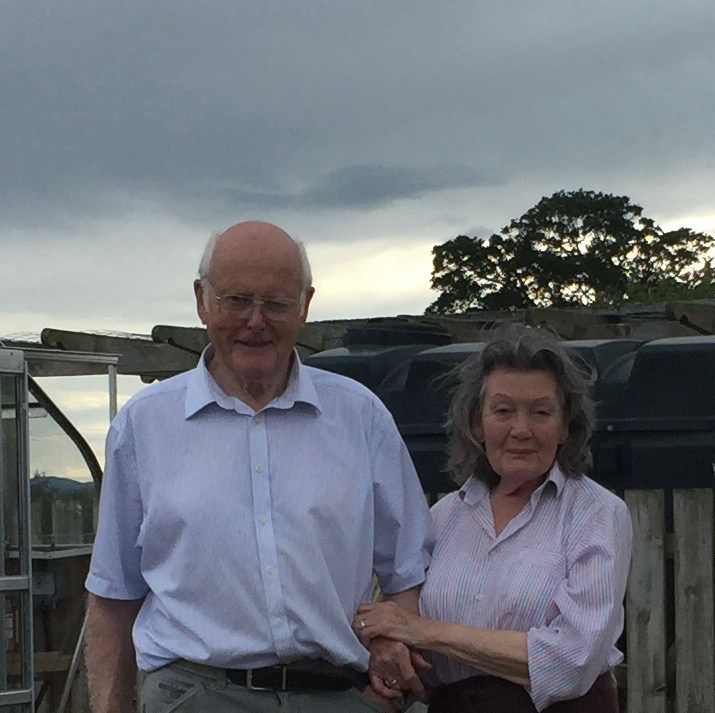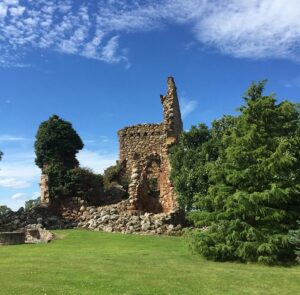I drove up the little dirt road, following the signs and with the help of a young woman pushing a baby carriage. “Up there,” she said, “the castle is just behind a new house, a massive, massive house.”
As I pulled up the driveway, an elderly man came up to the car. “Ye’ll be wanting to see the castle?”
“Yes, it is okay?” I said as I realized that this was his private property.
“Aye. And ye’ll be wanting to take photos?” He was smiling, indicating that it was very okay to take photos, and directed me to a spot to park between a few barns and a large house (but not “massive, massive as the young woman had said.)
I stepped through a gate and walked across a grassy slope. A heap of stones, the remnants of a tower and a few walls, the castle looked about the size of our tiny row house in Burlington, Vermont. This was the hereditary home of the Hay family in Morayshire, seat of John Hay, Laird of Park and Lochloy. In the 1600s, with peasant labor, they farmed the thousands of acres around it, land that reached several miles down to the Firth of Moray, an inlet of the North Sea. Standing here, I could see all of that land and all the way to the sea.
I took some pictures and walked back down to the car, where the man was waiting for me. James Campbell, he introduced himself, and invited me in for tea. His wife Doreen came out and we went into the kitchen where she made the tea and laid out a variety of cakes and biscuits. James told me that they had lived in this house that they’d built twenty years ago after living down the hill in their old farmhouse. He’d been a dairy farmer all his life, and when they retired, they built this larger house near the castle with its magnificent view of the land around it.
James and Doreen obviously enjoyed having visitors to the castle that was on their land and told me that many Hay descendants had come to call. “So you’re a Hay, too?”
“Well, very remotely,” I said. “My ancestors in Scotland were named Hay, and probably way back were related to these Hays.”
They were surprised when I said my ancestors had moved to America in the 1700s. I guess that’s unusual, or maybe just more remote than they’d thought. James and Doreen have an archive of books and material about the castle and the Hay family. They brought out book after book, and soon I was surrounded by a small library of information.
The minutes went on, and James and Doreen seemed eager to talk about the castle and the Hay family. My instinct was to look at my watch, but then I realized that I didn’t have to be anywhere. How wonderful, I thought, to be free to stop and chat for an hour with someone you meet like this. And serendipity that now I could learn something more about the history I’d been studying for the past few years. I told them about my project, the novel about Isobel Gowdie, a peasant on the Hay lands, and her witchcraft trial, and Doreen smiled. “Ah yes, the witch of Auldearn.” Isobel is known in these parts.
They showed me books about the Hay family, the history of the castle, some plans one man had drawn up to restore the castle to its original form, “but he couldn’t get the money from the government.” There was a book on the history of the Auldearn Church, which features prominently in my novel, and pictures of James and Doreen’s twenty grandchildren, most of whom live nearby. They led me on a house tour, and upstairs I enjoyed the view from two large drawing rooms with “massive, massive” windows in bays overlooking the land.
When I was finally able to extract myself from this charming place, I was armed with more than I’d imagined. The kindness of strangers in magical Scotland.

